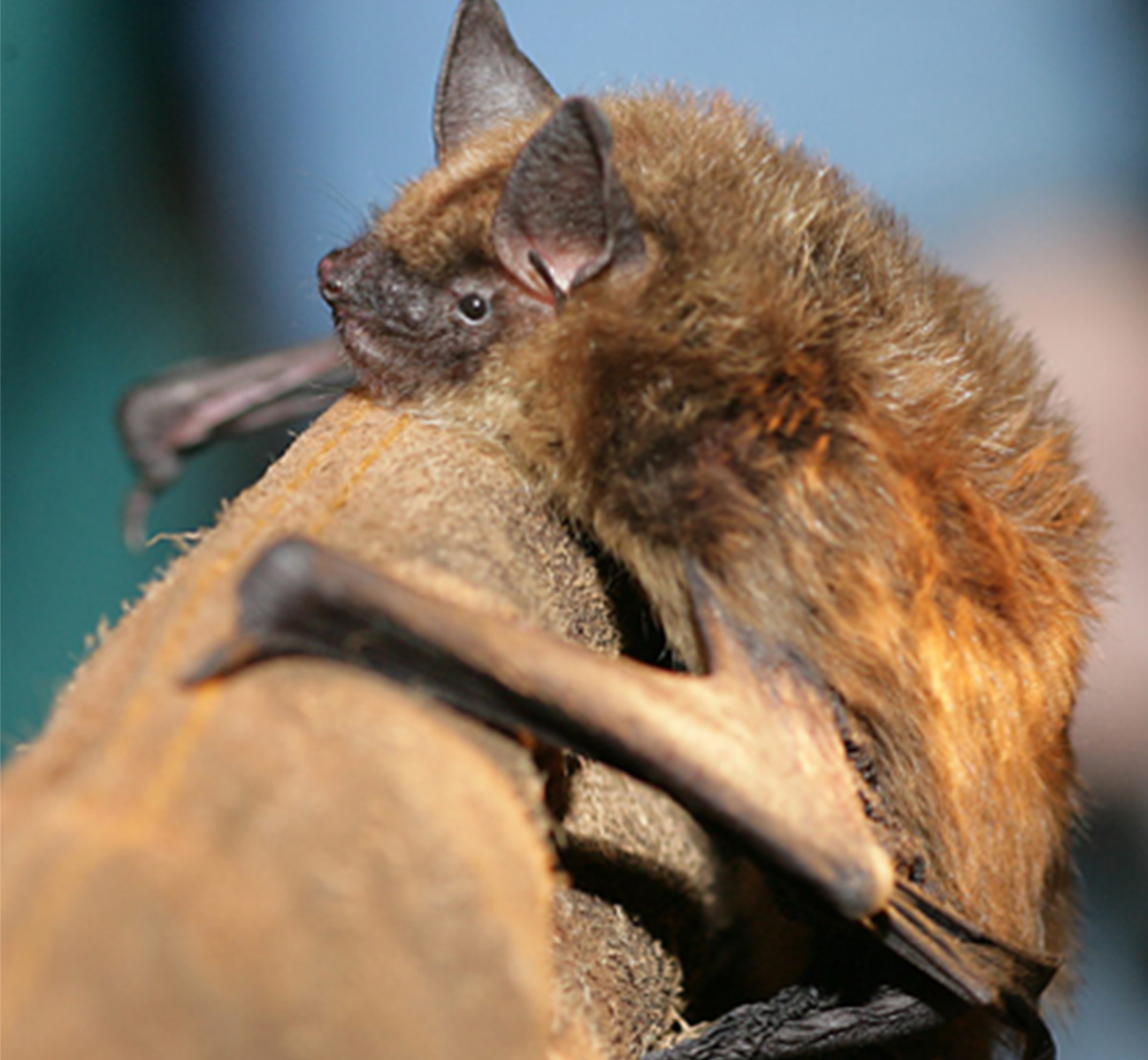Out of the Dark
Ensuring the health of the colony is a small investment for Kurta and Consumers Energy, with a big payoff for the Tippy Dam colony and for Michigan.

On the Manistee River in Wellston is the Tippy Dam, a nearly 100-year-old hydroelectric plant operated by Consumers Energy. Below the dam is some of the best fishing in the state. But it’s what’s inside the dam that has drawn Dr. Allen Kurta on a sharp winter day. It is damp, cold and dark inside, but that doesn’t bother him; it’s why he’s here. He works his way to a 4-foot-wide concrete walkway that extends the length of the dam. He must be careful; the walkway is 25 feet above the chamber floor.
But Kurta, a biologist from Eastern Michigan University, is not looking down; he’s looking up at the creatures he has come to see. There are a lot of them, but it’s eerily quiet, and that’s a good thing. It’s the only time Kurta can do his work. He has been coming to this area of the Manistee watershed for almost 20 years, banding, cataloging and observing the largest bat colony in lower Michigan. The bats love the spillway because the water from the Manistee River keeps the walls moist and cool, like a cave. Kurta, who became batty over bats as a graduate student, was introduced to the residents of the spillway when Consumers Energy contacted the bat expert to come and look at the colony. “I was hoping there were at least 50 bats,” Kurta says, remembering his first visit some two decades ago. “What I got was more than I expected.”

That colony of bats has grown over the years, under Kurta’s watchful eye and with efforts of Consumers Energy, which owns the facility. Today, some 20,000 bats call the Tippy Dam area their home. Bats suffer from bad press thanks to folklore, which often depicts the night denizens as mysterious. While that may make for good fiction, it doesn't reflect reality; bats actually deserve our gratitude. A single bat can consume 1,000 mosquitoes in an hour. The bat’s taste for those unwanted summer guests means fewer bites, and with that comes a lower incidence of West Nile Virus, which is transmitted by mosquitoes.
Farmers, too, owe thanks to bats and their appetites. Fewer insects also means less damage to our crops and reduced dependence on pesticides. Biologists estimate bats are worth at least $3 billion a year to U.S. agriculture.
Winds of Change
Discover how the power of wind is reshaping Michigan's energy future.
About Wind EnergyFor the best performance on this website and others, please upgrade your browser. For suggestions to find the best web browser for you click here.



